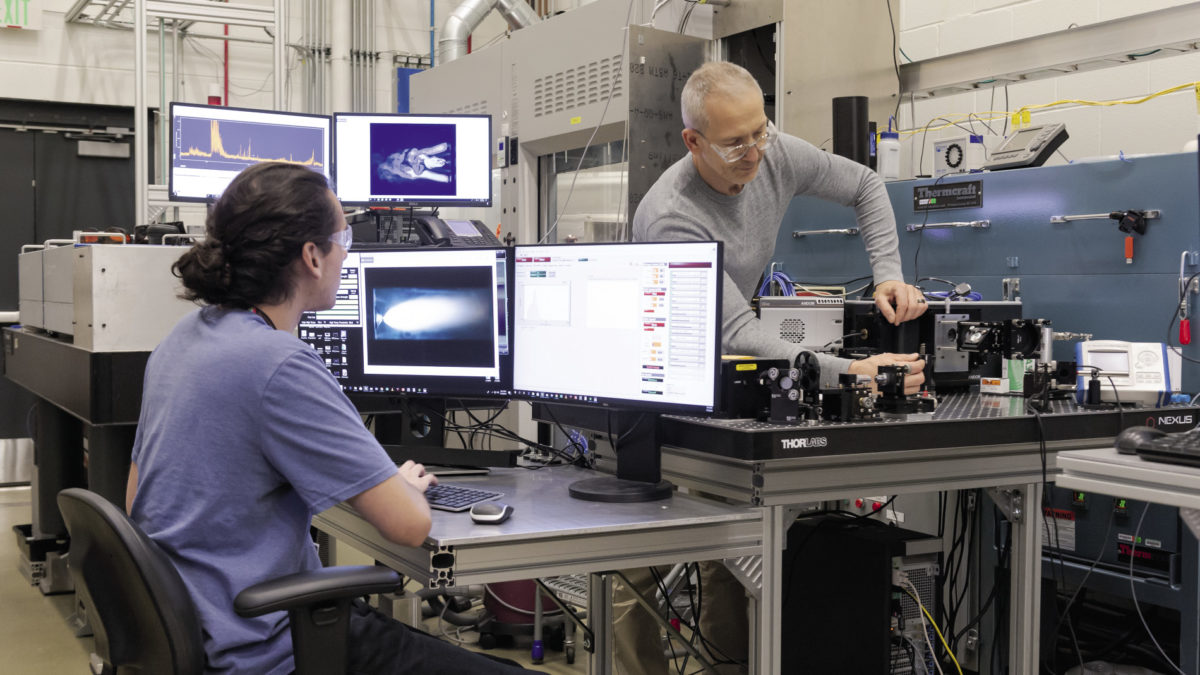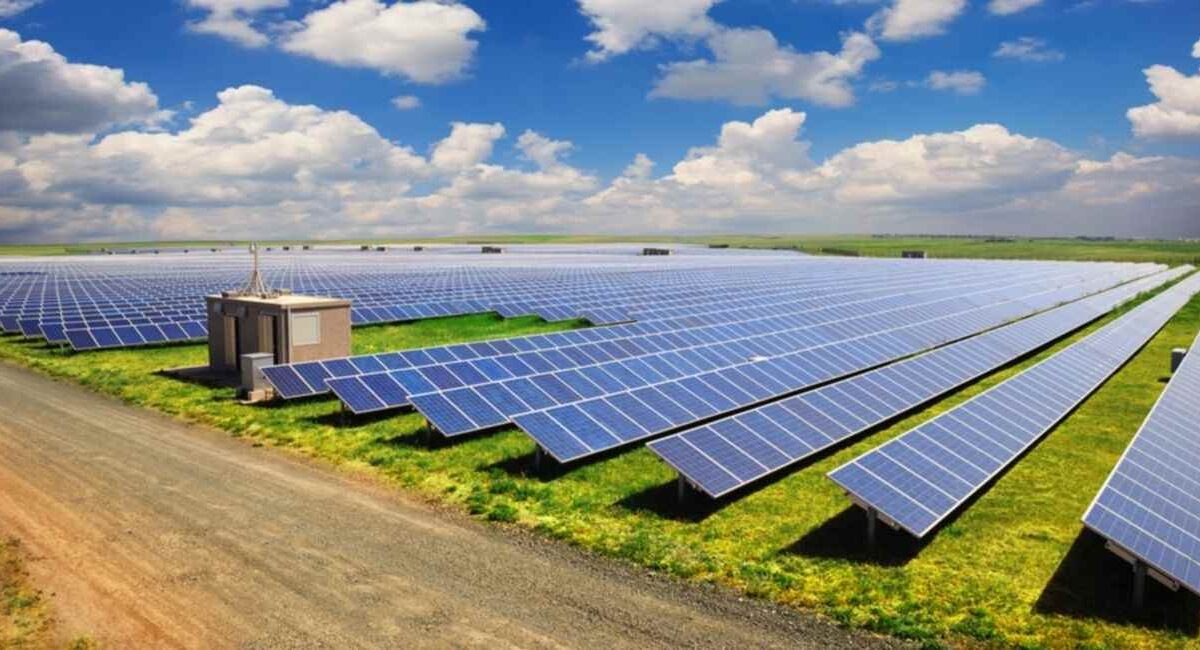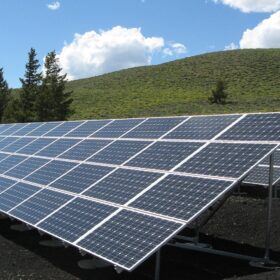From pv magazine 02/2021
Argonne’s new manufacturing technology, shown here, can simplify the production of nanomaterials in high volumes. The benefits include faster production rates and reduced material waste, compared to standard wet chemistry processes.
For the first time, scientists at Argonne have shown that artificial intelligence (AI) and advanced statistical methods can improve the way some nanomaterials are produced in the laboratory, via flame spray pyrolysis, and then scaled up to manufacturing. This discovery, described in the journal Materials & Design, is the first step toward producing vast amounts of next-generation materials for energy storage quickly, automatically, and efficiently.
Drawn to a flame
Scientists are drawn to flame spray pyrolysis in part because it helps solve a common problem – scaling new chemicals made in the laboratory, typically a gram or two, to industrial sizes of a kilogram or more. Scaling up new materials is more complex than, say, doubling your casserole recipe. While new materials may perform well in the lab, performance may slip when you try to create them at larger industrial scales.
Fortunately, flame spray pyrolysis can crack this code by producing large amounts of advanced nanomaterials in a single step. Yet one problem remains. Engineers must accurately tune dozens of variables – for example, flame temperature, the shape of the spray nozzle, how fast to pump chemicals and oxygen – to produce the material with the exact target properties.
In other words, “how do you optimize the process to get a material that you’re happy with,” says Noah Paulson, a computational materials scientist at Argonne.
Automatic for the people
Until recently, researchers struggled to answer this question, relying on inefficient trial-and-error experiments. Yet new AI-driven methods have shown that results can be automated, according to the Argonne team, which also includes Marius Stan, the intelligent materials design lead, and Joe Libera, a principal materials scientist who operates the laboratory’s flame spray pyrolysis.
The Argonne team applied a novel artificial intelligence technique, known as active learning, to 17 flame spray experiments. As a demonstration, they sought to minimize the variety in particle sizes for silica, a mineral commonly found in sand. Silica has many industrial uses, including filtering water and manufacturing glass and concrete. But the team chose silica for the demonstration because the compound is easy to study via computer simulation. In each experiment, AI picked the best values for the flame spray machine’s settings, based on all previous experiments, to get the silica particles to a more uniform size.
“The AI asked to run the next experiment with specific conditions that it thought it would learn the most from. Whether it is the location of the optimal point, or the best point to improve the model to reduce uncertainties,” explains Paulson.
Each time, the material produced inched closer to the team’s goal. In the end, the team found three benefits of their new AI approach:
- It allowed them to complete fewer experiments, all in one day. Without AI, scientists would have needed to run many more experiments over a period of weeks.
- It optimized all experimental conditions automatically, without human input.
- It required much less data than other AI or machine-learning techniques, which are widely known for recognizing images and autonomous driving.
“We got the most bang for our buck in terms of data,” says Paulson, referring to the third benefit. “There’s a misconception that AI always requires millions of data points to be successful.”
Stan agrees, adding that “in fact, rather than being large, it is more important that the data set is representative of the real system, that it covers a broad domain of compositions and process parameters.”
These advantages stem, in part, from the team’s use of Bayesian optimization. This relies on a powerful statistical rule, inspired by the work of 18th-century English minister Thomas Bayes, that combines assumed probabilities of events occurring and actual measurements to model reality. In 2011, a similar method, known as Bayesian search, helped a group of statisticians find Air France flight 447 at the bottom of the Atlantic Ocean, where it had lain since crashing two years earlier en route from Rio de Janeiro to Paris.
With Bayesian optimization, the more accurate the starting data, the more accurate the results. With that rule in mind, Paulson plans to improve results by starting with data from simulations of the fluid dynamics within flame spray pyrolysis. This will give scientists a head start, before their AI algorithms see any experimental data.
The team’s discovery may help find ways to make other materials that enable vital technologies. Take, for example, lithium lanthanum zirconium oxide, which, while expensive and hard to produce, could act as the electrolyte in solid-state batteries. But it might be made cheaply via flame spray pyrolysis, according to Paulson and his colleagues, leading to safer batteries with twice the energy density of today’s lithium-ion counterparts.
About the author
Dave Bukey is a writer at Argonne National Laboratory, outside of Chicago. He edits the laboratory’s science magazine, Argonne Now.
This content is protected by copyright and may not be reused. If you want to cooperate with us and would like to reuse some of our content, please contact: editors@pv-magazine.com.








When you can use Pollurion Free Compressed Air for Energy Storage…. why does the WORLD NEED BATTERIES that leave behind Toxic Solid Waste… Are we not just just replacing Air Emissions, Solid and Liquid Waste from Energy Production/Use with Battery Pollution…. “WHEN WILL THEY EVER LEARN… WHEN WILL THEY EVER LEARN” …???